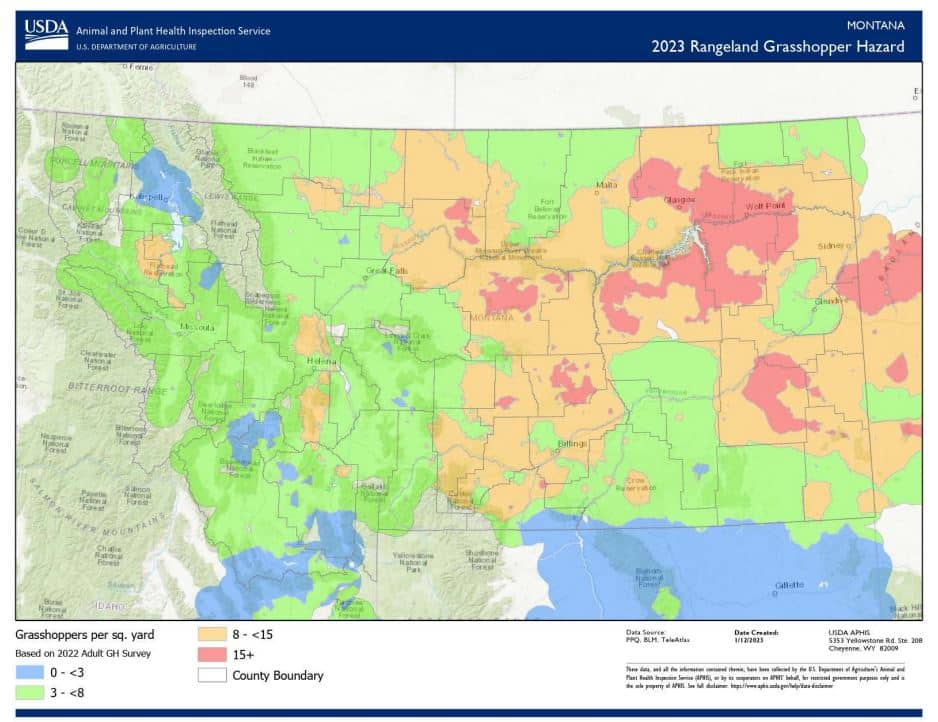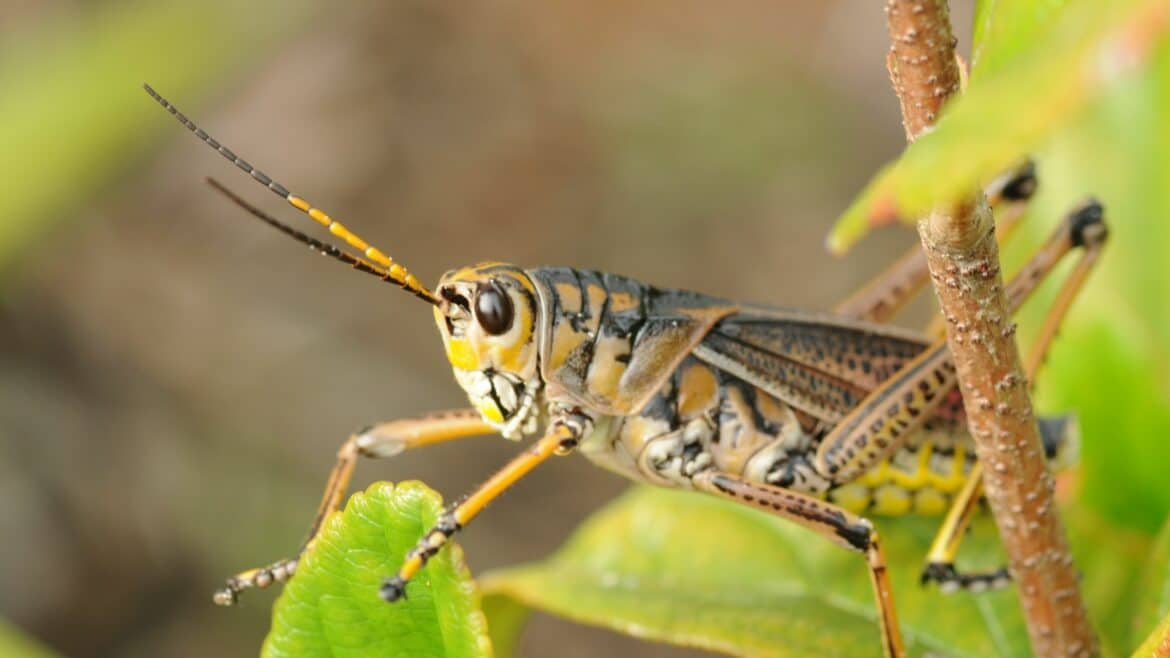One of the most important considerations as we look ahead for this year’s crops and pasture management are grasshoppers. With the substantial losses of crops and forage to grasshoppers, and there still being significant risks expected for this summer, it is important for farmers and ranchers to know the “3 W’s”- where are the hotspots, why are there outbreaks, and what can we do?
To gain insight on this year’s grasshopper season outlook, Northern Ag Network’s Grace McDonald spoke with State Plant Health Director of USDA’s Animal and Plant Health Inspection Service, Gary Adams.
Based on 2022 surveys, the USDA can predict where potential grasshopper hotspots may be this year. Custer County, Garfield County, McCone County, and up through the Valley County are expected to be the most likely to combat grasshoppers again this year. Other places that could see significant grasshopper infestations are in western and central Montana. Take a closer look at USDA APHIS’s hotspot map below.

When asked what conditions lead to more severe grasshopper outbreaks, Adams said that it all started in 2019 when Montana had a lot of spring moisture, which created a lot of vegetation, creating more for the grasshoppers to eat. After drought set in, the natural fungi that run through the population of grasshoppers were reduced.
“In 2019 we had a lot of grasshoppers, all the eggs hatched, they survived very well, and they have just been perpetuating each year since then,” said Adams.
Early surveying is key when it comes to farmers and ranchers protecting their land, which includes spotting their eggs, watching for hatching, and identifying their population trends. Producers should be looking every week to make sure that they aren’t missing subsequent hatches.
Adams said, “They only look like a tiny grain of rice when they first hatch, and sometimes are not very visible until they are adults and flying around, so doing some research can help when it comes to identifying them.”
The treatment tool that APHIS uses is an insect growth regulator that is very targeted to grasshoppers and other species that eat the vegetation and pesticide. “The regulator keeps the grasshoppers from growing into adults and reproducing, therefore it is important to catch them in their earliest stage,” Adams says.
Adams said that if there is a need for assistance in controlling grasshoppers from multiple landowners, that it is possible to request funding and try to coordinate a program by contacting their local weed district. The areas that are applicable for treatment are a minimum of 10,000 acres.
Find more resources about controlling and managing grasshoppers here or contact your county extension agent with questions.
###
Grace McDonald-Northern Ag Network


